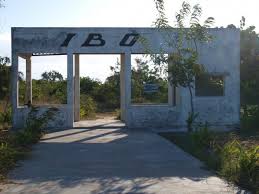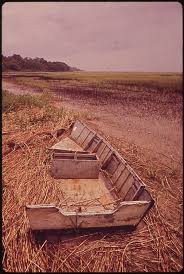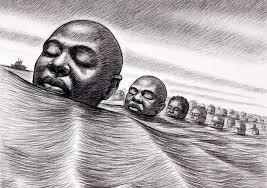Igbo Landing
By Joy Chinecherem
- “Just bury me in the ocean with my ancestors that jumped from the ships, ’cause they knew death was better than bondage.” Michael B. Jordans (From the movie, Black Panther).
The above quote is not just a movie line from the blockbuster ‘Black Panther’, it stands for what is referred to by many as the first of the freedom march, the root of black resistance in American history ‘The Igbo Landing story’.
This is 218 years since more than 75 Igbos walked into Dunbar Creek in an act of defiance, choosing death over slavery. The Igbo landing site Dunbar Creek on St. Simons Island, Glynn County, Georgia is the site of one the largest mass suicides of slaves in history. This is the story of the Igbo landing
More than 200 years ago, Igbo slaves from what is now Nigeria and other African slaves arrived on the shores of Savannah, Georgia, on the slave ship the Wanderer in 1803 around May, after surviving the middle passage. They were purchased for an average of $100 by slave merchants John Couper and U.S. Congressman, Thomas Spalding.

The chained captives were reloaded and stuffed below the deck of a coastal vessel, the York which set course for St. Simons where they would be resold. During the voyage, approximately 75 Igbos rose in rebellion, they threw their captors overboard which led to the grounding of the ship at the Dunbar Creek.
It is worth noting that the Igbo people were already known by the slave owners and traders alike of the American South as fiercely independent and more resistant to chattel slavery.
Sequences of events from here remain unclear, the most popular account has it that when the captives came out of the vessel, they saw the harsh realities of the kind of life they would be subjected to so they opted for death.
Stories have it that they were led by someone like a high chief or chief priest singing in their Igbo dialect:
“Mmụọ mmiri du anyi bịa, mmụọ mmiri ga-edu anyi laa”
The song translated as “The water spirit brought us. The water spirit will take us home”.


They marched into the river singing, committing mass suicide by drowning. This was the first act of rebellion by the enslaved. The first account of this incident was recounted by Roswell King, a white overseer on a nearby Pierce Butler Plantation, He and another man identified only as Captain Patterson recovered thirteen bodies. The others remained missing, and some are believed to have survived the suicide episode.
Although for more than two centuries most authorities considered the accounts to be an Afro-American folktale, research since 1980 has verified the factual basis of the legend and its historical content. The site was included as a historic resource in a 2009 county survey.

Beyonce Knowles paid homage to this historic incident in her Album Lemonade, famous books have been written to mark this, and artworks representing it.
Post Disclaimer
The opinions, beliefs and viewpoints expressed by the author and forum participants on this website do not necessarily reflect the opinions, beliefs and viewpoints of Anaedo Online or official policies of the Anaedo Online.

